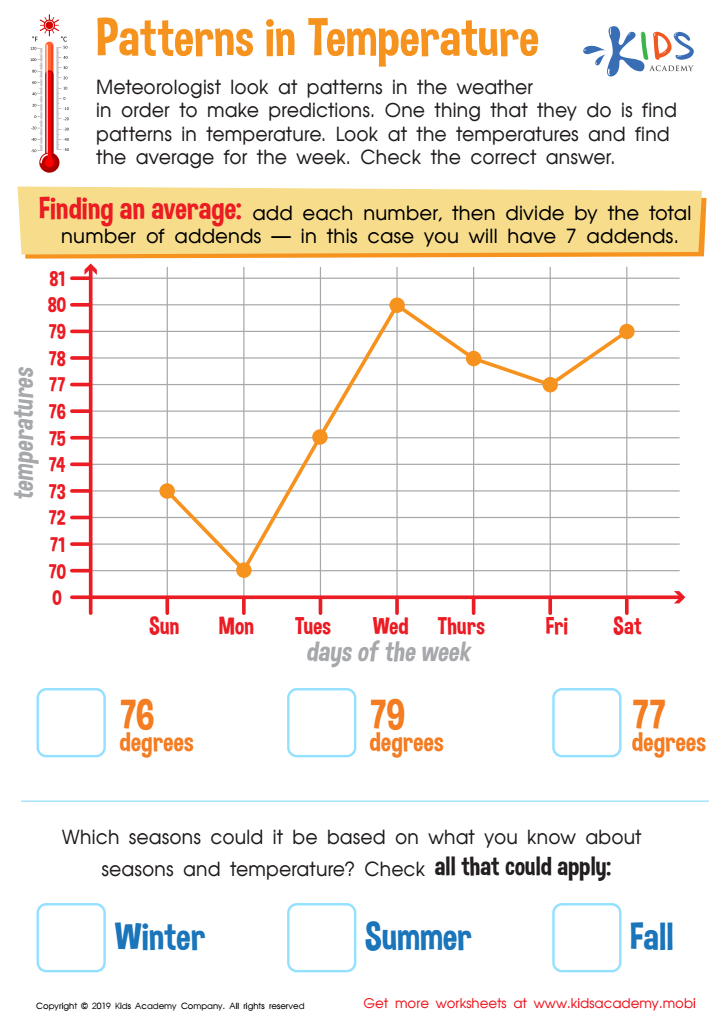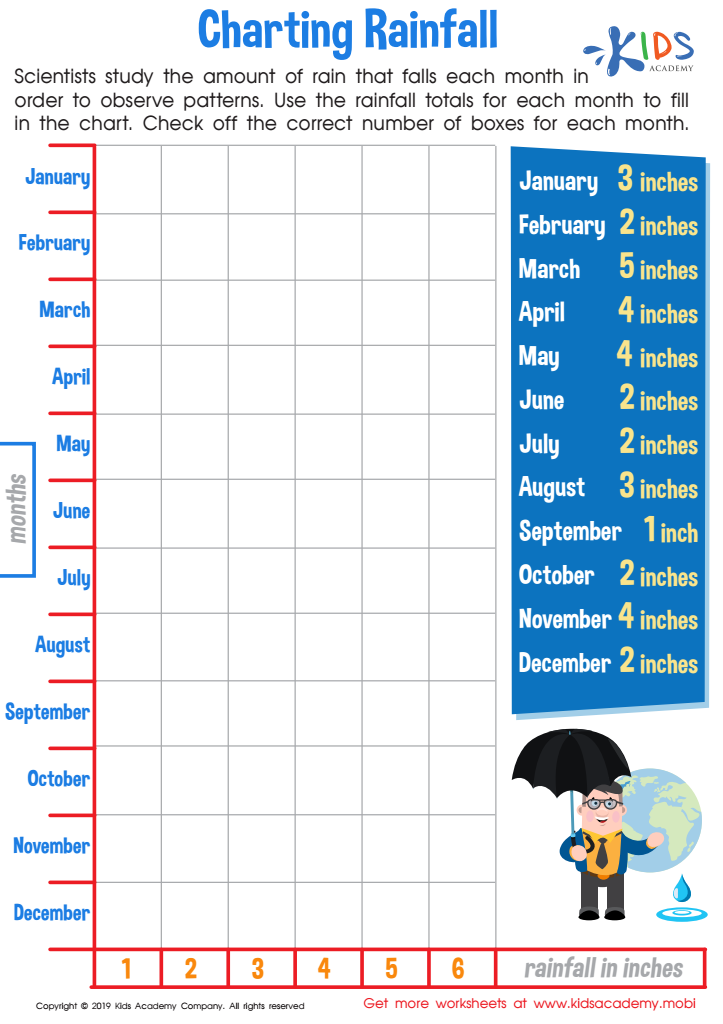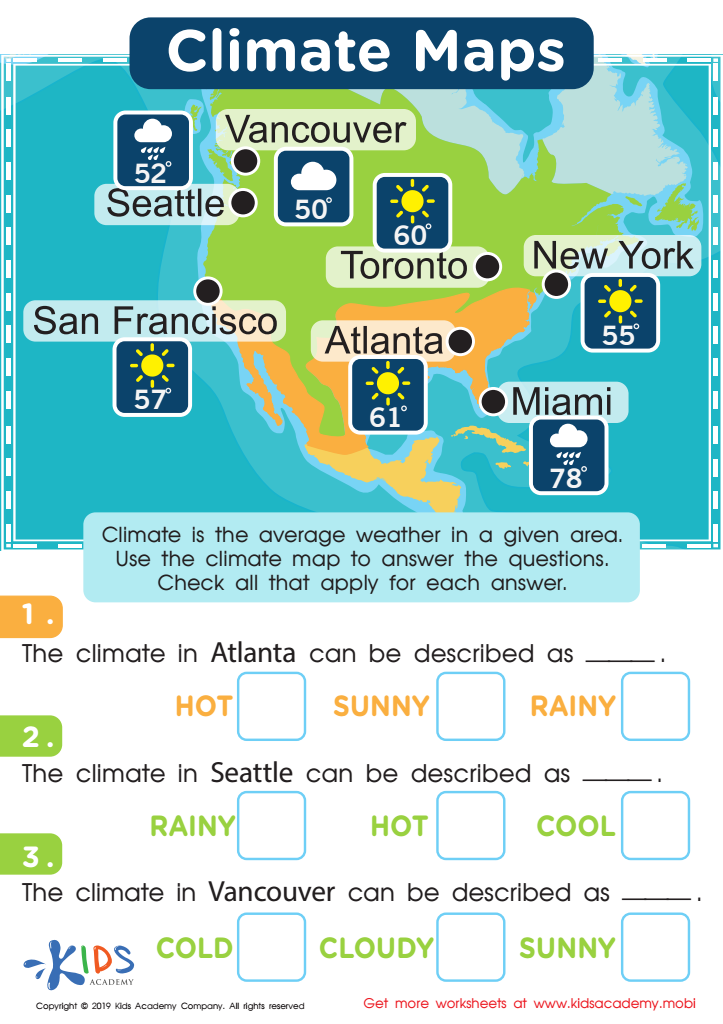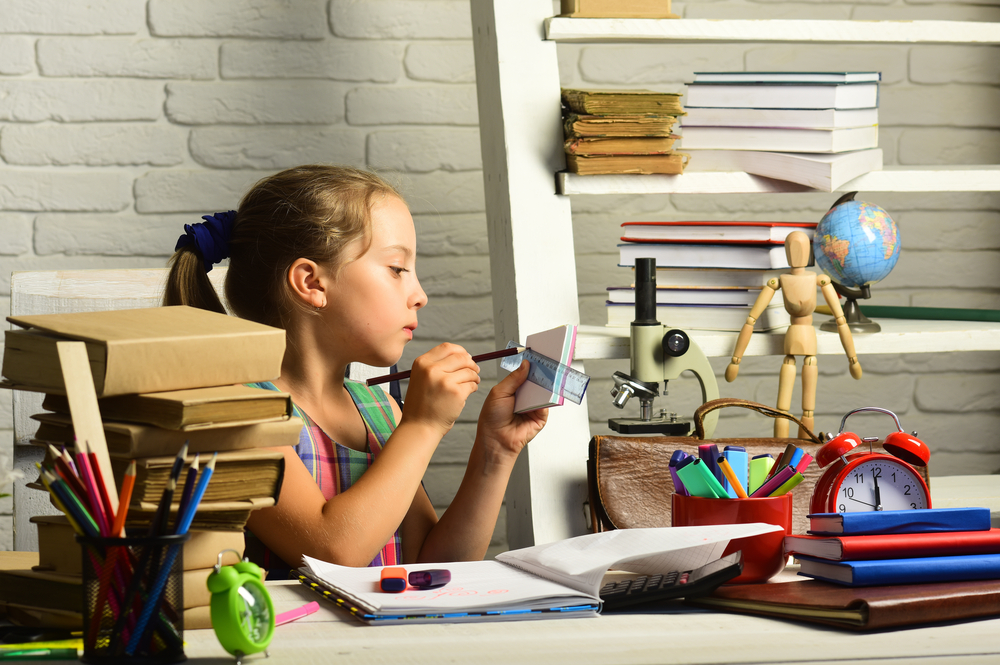Analyzing data Normal Worksheets
5 filtered results
-
From - To
Our "Analyzing Data Normal Worksheets" offer engaging and age-appropriate activities designed to build essential data analysis skills for young learners. Tailored for early grade students, these printable worksheets guide children in interpreting simple charts, identifying patterns, and drawing conclusions. Our resources foster critical thinking and mathematical reasoning through fun, interactive exercises. Kids will love the colorful graphics and easy-to-follow instructions, making learning enjoyable and effective. Parents and teachers can confidently support their students in developing strong analytical abilities with these thoughtfully crafted worksheets. Ideal for home practice or classroom use, let’s make data analysis exciting for young minds!


Studying Fossils Worksheet


Water Scarcity Worksheet


Patterns in Temperature Worksheet


Charting Rainfall Worksheet


Climate Maps Worksheet
Analyzing data normal, or data that follows a normal distribution, is essential for understanding student performance and making informed decisions in education. Parents and teachers should care about this because it enables the identification of patterns and trends in students' achievements, strengths, and areas needing improvement. When data aligns with a normal distribution, it often represents an accurate depiction of the general population's performance.
By analyzing this data, teachers can tailor their instruction to better serve all students, adapting teaching strategies to support those who may struggle and challenging those who excel. Consistent monitoring and interpretation of normally distributed data help in setting realistic benchmarks and goals, ensuring that progress is measurable and interventions are timely.
Parents can benefit by understanding how their child is progressing relative to their peers, fostering better communication with educators and ensuring appropriate support at home. Employing strategies based on data can also bolster a child's confidence and motivation, as their individual needs are acknowledged and addressed.
In sum, analyzing data normal is not just about crunching numbers; it informs effective, personalized education strategies, ensuring every child has the opportunity to reach their full potential. Engaging with this data makes parents and teachers more proactive and responsive to students' educational journeys.
 Assign to My Students
Assign to My Students








.jpg)












